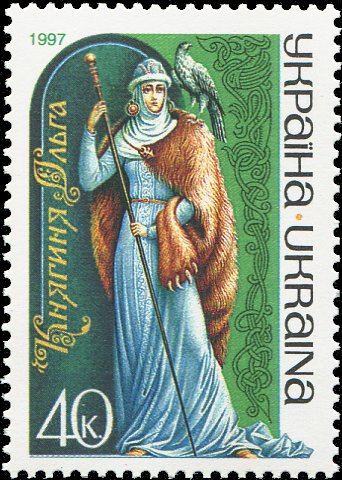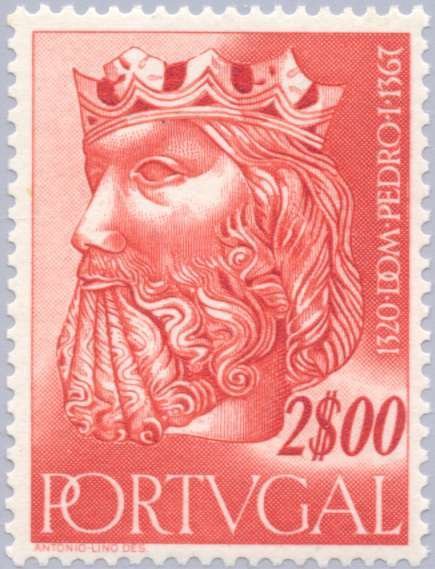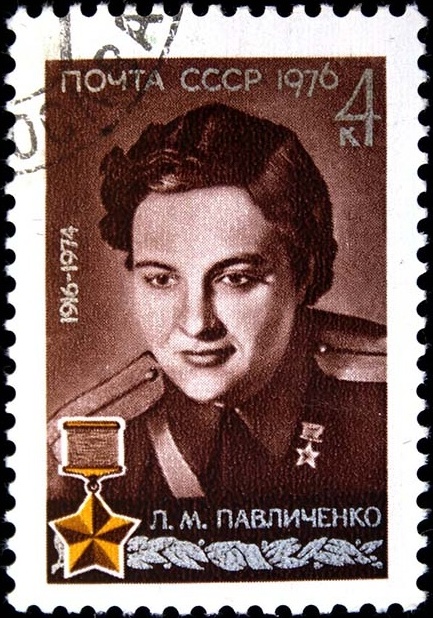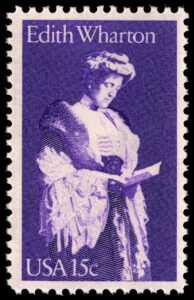USS WYANDOT AKA-92 Postal Card
As a beginning collector I have not paid much attention to postmarks but I recently bought a stamp album with some interesting material and noticed these postcards were postmarked on U.S.Navy Ships. I will try and store and index them here by ship name.
The Wyandot was a U.S. Navy Andromeda Class Cargo Ship. Keel was laid May 6th, 1944. It was launched June 28th, 1944.

This postcard is postmarked January 2nd 1958 although the 58 is partially missing. I think it is a Locy Type 2(n). The cachet reads:
USS Wyandot
Deep Freeze I, II & III
1956 – 1957 – 1958

It is addressed to Alfred H. Dowle of Downers Grove, Illinois

Alfred H. Dowle, USCS H-1609 (1995). Was the national president of the Naval Covers Collectors Society from 1959 to 1961. He provided significant support for the Society in the midwest. Editor of the USCS LOG for several years, and part of the committee that assumed responsibility for the Catalog of United States Naval Postmarks when the USCS took over the task of its publication. For many years he wrote a regular column in the LOG providing historical information.

The back provides this information:
J.D. Williams, Naval Postal Clerk, El Paso, Illinois
and there is a handstamp, in blue, for Elwood E. Ellis, Universal Ship Cancellation Society Number 1799.
On the bottom, in pencil, are further notations 15h-92 10/11 190
In the spring of 1955, Wyandot joined Task Force 43 for “Operation Deep Freeze I” in the Antarctic. After a brief yard availability, the ship loaded supplies and equipment at Davisville, Rhode Island, and shifted to Norfolk, from whence she departed on 14 November. Sailing via the Panama Canal and Lyttelton, New Zealand, Wyandot arrived at McMurdo Sound, Antarctica, on 27 December. While in those cold southern latitudes, she served as the flagship for Rear Admiral Richard E. Byrd, officer-in-charge of the Antarctic programs.
She was then assigned to “Operation Deep Freeze II” in 1956. Wyandot rendezvoused with Staten Island (AGB-5) near the Panama Canal Zone before both continued on for Antarctica, arriving on 15 December at the Weddell Sea pack ice and then breaking through the Antarctic Circle on 20 December en route to Cape Adams. In 1957 Staten Island led Wyandot from Cape Adams to Gould Bay where Ellsworth Station was then assembled. Subsequently, the Wyandot returned home and operated with the Atlantic Fleet into the late 1950s.

USN Photo by LT. William D. Tribble.
Thanks to Brown Beauty

If you went to school in the U.S. you probably heard the poem by Henry Wadsworth Longfellow that begins, “
“Listen my children and you shall hear of the midnight ride of Paul Revere…”
The fact of the matter is that Paul Revere made some of the journey but wasn’t the one to alert the Massachusetts colonists that the British were approaching.
He did ride towards Concord, about 20 miles, but was captured soon after by a British Patrol. His horse was confiscated and he was escorted back to Lexington under armed guard. It is also known that a third man in Revere’s party, Dr. Samuel Prescott did alarm the militia in Concord.
Thankfully there were other riders, about forty of them, who carried on the journey, most notably 23 year old Israel Bissell who galloped off to Worcester. Arriving there in two hours he changed horses and headed to Philadelphia, a distance of about 350 miles in only six days.
Side note: Paul Revere never owned the horse he rode out on. It was “borrowed” from a neighbor, Samuel Larkin, and never returned. The horses name is believed to be Brown Beauty.
Columbus in Chains

Columbus was an awful leader and his attempt at governing led to rebellious colonists in the New World. When the King of England sent a representative to govern there, Columbus refused to comply. He was arrested, shackled, and returned to Spain in disgrace.
Now I don’t normally go in for the wiping of history. I don’t think we need to tear down statues and rename schools in order to set the historical record straight. Some concepts transcend the human and stand for things that may be more important. You can teach the truth without erasing history.
Like what I wrote about Vasco de Gama in another post, Columbus was no saint.
First of all, he may not have “discovered” America. Eric the Red may have discovered it 500 years prior to Columbus and there is evidence that the Chinese may have set foot on North America before even that.
Secondly, according to journals kept by his crew and missionary diaries he was extraordinarily cruel to the Native Americans. Men were worked to death and young girls sold into sex slavery. One Catholic priest claims to have witnessed Columbus and his crew kill and dismember thousands of locals.
So why is he on a stamp (and he is on many, not only United States stamps)?
Simple really.
Columbus Day was created by President Harrison in 1892 in response to the anti-Italian motivated lynching of 11 Italian Americans in New Orleans in 1891. Then later in 1934, Congress, under pressure from the Knights of Columbus.
However. Barack Obama also decreed a Lief Erickson day on October 9th of each year. I think we should get that day off.
To honor Leif Erikson and celebrate our Nordic-American heritage, the Congress, by joint resolution (Public Law 88-566) approved on September 2, 1964, has authorized the President of the United States to proclaim October 9 of each year as “Leif Erikson Day.”
NOW, THEREFORE, I, BARACK OBAMA, President of the United States of America, do hereby proclaim October 9, 2013, as Leif Erikson Day. I call upon all Americans to observe this day with appropriate ceremonies, activities, and programs to honor our rich Nordic-American heritage.
https://obamawhitehouse.archives.gov/the-press-office/2013/10/08/presidential-proclamation-leif-erikson-day-2013
It’s All in the Laptop

No, I am not talking about the infamous Hunter Biden laptop that the FBI is not investigating. I am talking about another famous laptop that, if searched, may have averted the tragedies of 9/11.
Given a tip by a suspicious flight school instructor, the FBI and INS detain a Moroccan French student in Minnesota. On his possession are two knives, flight manuals for 747s, information about crop dusting and, of course, a laptop.
Following his chain of command, FBI Agent Harry Samit requests permission to search the laptop. His request is denied citing “privacy issues”. The FBI’s Minnesota Bureau sens additional requests in and those are also denied. FBI Agent Colleen Rowley also sends in a request to search the suspects apartment…. you guessed it. Denied. In a last ditch attempt Agen Samit requests the laptop be turned over to the Secret Service. Denied.
At the end of his options Agent Samit sends this email out:
Last Memo (9-10-2001): The Day Before the September 11 Attacks
(FBI Agent Harry Samit to Catherine Kisar)>>>HARRY SAMIT 09/10/01 03:38 PM>>>
Cathy,ITOS/RFU SSA Maltbie has determined that we do not have enough for either a criminal search warrant or a FISA search warrant of Moussaoui’s computer. We did not pursue this further because they have directed that this is an INS matter and that the “FBI does not have a dog in this fight.” Of course, I strongly disagree.
The current plan is to deport Moussaoui to France. [Blacked out] has advised that they have the legal authority to hold Moussaoui and search his effects. This search was a distant third in my list of desired outcomes, but at this point I am desperate to get into his computer. I’ll take anything.
My big fear is that the French will determine that most, if not all of Moussaoui’s criminal activity occurred outside France and they have no ability to convict (he’s lived in the UK since 1995). In that case, he walks. I don’t know if they’ll have to return his property in this case (including the 747 flight manuals), but it seems possible.
The current wrangle with ITOS/RFU is over whether John W. (our INS co-case agent) and I can go to France to be present for the search. LEGAT Paris relayed [blacked out] request for FBI personnel to do just that, but RFU is opposed.
I’ll keep you posted, but I am not optimistic. Thanks for your help and assistance.
Take care,
Harry
The next day terrorists fly planes into both towers of the World Trade Center in NY as well and mounting other attacks at the Pentagon and in Pennsylvania. Nearly 3,000 people are killed.
After the attacks the FBI allows the laptop to be searched and finds the names and phone numbers of the entire al-Qaeda chain of command, details of the September 11th plot and the names of the other hijackers. The french student, Zacarias Moussaoui, is arrested and sentenced to life in prison.
Since then, in October 2001, the Patriot Act is passed which is supposed to allow law enforcement easier access to personal information of suspected foreign operatives.
Three weeks passed between Moussaoui’s arrest and the search of his laptop. The entire 9/11 tragedy might have been averted.
Steel Yourself for This One
You’ll see the face of Mao Tse-Tung on many stamps while collecting. Especially, of course, those of China. They appear on many other countries stamps including Liberia, Gambia and Sierra Leone for some reason.

This one is of Zhu De, Mao Tse-tung and Troops issued for the 22nd Anniversary of the People’s Liberation Army. You know, those guys who like to send balloons over U.S. Airspace.

And you may be wondering, at this point, who Zhu De. Well, he’s the Commander in Chief of the PLA and was instrumental in the Great Leap Forward.
The Great Leap forward was an initiative in China around 1956 by the Chinese Communist Party to force an industrial revolution in China. It was decreed that farmers put down their plows and build factories and blast furnaces in their town. Then they were instructed to melt down their plows along with any other metal objects they could get their hands on to build infrastructure to ‘make China great again’. More than 23,000 steel plants were created churning out poorly made steel.
Only problem was, with a population of 680,000 million and no food production, the economy collapsed as people found themselves starving. It is estimated that between 20 to 25 million people died.
Seeing his mistake, Mao ends his “Great Leap Forward” initiative and allows people to go back to their life of agriculture. Only people are pissed off. So Mao, in his infinite wisdom, initiates another plan…. the “Cultural Revolution” which brutally made anyone who disagreed with Mao disappear forever.
Olga the Badass Saint
In 1997 this stamp featuring Princess Olga of the Ukraine was issued. Princess Olga, also known as Olga of Kiev, was known to be a very beautiful and strong woman. As such she drew the attention of men throughout the lands. Unfortunately for them she was quite happily married to Igor of Kiev and had a young son with him.
When their son was only three a rival tribe, the Drevlians, attacked Igor of Kiev and killed him in the hopes of convincing Olga to marry the Drevlian Prince Mal. Svyatoslav, their son, became the official ruler of Kievan Rus but was too young to rule so Olga became regent until such age he could take charge.

With Igor out of the picture it wasn’t long before Prince Mal made his move. He sent a boat with 20 emissaries to her to ask her to marry him. She promptly buried them alive, along with their boat, in a deep pit.
Undeterred, Prince Mal sent a group of noblemen to plead with her to marry him. She wined and dined them and invited them to her royal bath house where they were locked inside and burned alive.

Finally, she invited the Drevlians to a feast to honor her slain husband. During the feast, as they enjoyed their food and wine coma, she had her soldiers slaughter all 5000 of them.
Olga attacked the Drevlians and burned their town to the ground. She ruled from 945 to 963 until her son was old enough to take power. She was a very benevolent and kind ruler by all accounts and is known for her initiating the building of stone buildings in Russia. Maybe to keep them from being burned so easily.

She is also one of the first Russian rulers to adapt christianity and one of only 5 women to be canonized (sainted). She is the patron saint of widows.
Pedro I and his Corpse Bride
This stamp is of Pedro I, also known as Peter I, who was king of Portugal. He ruled from 1320 to 1367.
Before he became king, however, Prince Pedro was married, through an arranged marriage, to his first wife who died in 1345. Shortly after he fell in love with a beautiful, young woman named Ines de Castro.
Ines was a commoner. Traditionally, in those times, marriages stayed between royal families in order to form strategic and political allies and maintain family reputations. Ines could bring none of that to the table and Prince Pedro’s father, King Afonso IV would have none of it.

King Afonso hired three men to kidnap Ines and kill her. They captured her and beheaded her.
When Prince Pedro found out his love was dead he vowed revenge on the men and on his father but knew he did not wield the power to go against his father, so he bided his time. When King Afonso died a few years later, in 1357, and Pedro became King of Portugal he put his plan into action.
King Pedro found the three men who killed his bride to be and had their hearts removed while they were still alive. Then he had Ines body exhumed, dressed in the Queens royal robes and sat her on her throne next to his.
A bit unhinged, he then decreed that all residents of the kingdom would come and pay respects to his Queen. Each resident came and bowed and lifted her skeletal hand to their lips and kissed it.
I was not able to find out what happened to Ines but King Pedro went on to be a cruel king. He ruled his kingdom with brutality and violence.
Lyudmila Pavlichenko or “Lady Death”
How many people do you have to kill to get featured on, not one but two, stamps? The answer can be found below.
Born in 1916 in a small town in the Ukraine she was an strong willed girl. Her family moved to Kiev in 1930 and she worked as a grinder in a munitions factory while studying history in college. Known as a tomboy she was active in sports including pole vaulting.
Upon hearing a neighborhood boy boasting of his abilities with a gun she took up the challenge and began practicing.
“I set out to show a girl could do as well. So I practiced a lot,” she said, “They wouldn’t take girls in the army so I had to resort to all kinds of tricks to get in.”
Joining the army she soon earned her marksman certification but, because she was a female, no one took her seriously. She was very persistent in asking for a chance do finally her superiors gave her a chance. She was taken to the front and handed a rifle. She was told to try and hit two Romanians working downrange with the Germans. She did so easily.
She was then sent out to the Moldovan and Greek fronts where she had an incredible 187 confirmed German kills in her first 75 days in live combat. She was transferred to Sebastopol where she was pitted against German snipers where she managed to take out 36 of them. After a long 8 months in battle she was hit by shrapnel in the face and sent to a hospital to recover.
She was feared by the Nazis who would broadcast appeals to her to defect to their side. She returned to the Red Army as a sniper trainer. She was credited with 309 confirmed kills although her actual number may be higher since the 309 number reflects those kills witnessed by a third party. She was nicknamed “Lady Death”
The Soviet Union wished the US to enter the war and take the pressure off them. Pavlichenko visited with President Franklin Roosevelt, becoming the first Soviet citizen to be welcomed at the White House. She was only 25 and had been wounded 4 times.
The press asked her questions about what length skirt she wore into battle and her makeup. “There is no rule against it,” Pavlichenko said, “but who has time to think of her shiny nose when a battle is going on?”. One newspapers reported that she “wore no lip rouge, or makeup of any kind,” and that “there isn’t much style to her olive-green uniform.” Another reporter criticized the long length of her uniform skirt, implying that it made her look fat.

She would later say, “I wear my uniform with honor, it has the Order of Lenin on it. It has been covered with blood in battle. It is plain to see that with American women what is important is whether they wear silk underwear under their uniforms. What the uniform stands for, they have yet to learn.”
The Washington Post wrote, “Isn’t it a part of military philosophy that an efficient warrior takes pride in his appearance? Isn’t Joan of Arc always pictured in beautiful and shining armor?”
They did not take her, or woman in the military seriously although she was only one of the 500 snipers out of 2400 that had survived. The lady assassin stuck to her guns (no pun intended) and told America stories of her battles and the invasion of her country. She got her point across that women were both capable and necessary in battle.
She would tell a reporter, “Every German who remains alive will kill women, children and old folks,” she said.“Dead Germans are harmless. Therefore, if I kill a German, I am saving lives.”
She would tell American women, “Now I am looked upon a little as a curiosity,” she said, “a subject for newspaper headlines, for anecdotes. In the Soviet Union I am looked upon as a citizen, as a fighter, as a soldier for my country.”

Pavlichenko would continue her tour in the UK before returning to Kiev to continue her studies. During her tour of America, Pavlichenko and Eleanor Roosevelt became great friends. In 1957, during the cold war. Eleanor Roosevelt pressed her soviet watcher to allow her to visit Pavlichenko. She was eventually allowed to and found her living in a small, two room apartment in Moscow. Being watched they talked in generalities until Pavlichenko grabbed Eleanor by the arm and closed the bedroom door.

She hugged Eleanor “half-laughing, half-crying, telling her how happy she was to see her.” They recounted stories of her visit and the many people she had met.
The stamps show recount her bravery and kill record as a sniper but Lyudmila Pavlichenko was a woman who fought for gender rights and equality as well.
Edith Wharton and her broken heart
So, without much further ado, a story about Edith Wharton. By 1905, Edith had already made a name for herself as an author. You may have read some of her books and poems although, in this day and age, it isn’t likely. Many of her works were made into films in the 1920’s and 1930’s. Probably the most notable modern adaptation would be “The Age of Innocence” released in 1993 directed by Martin Scorsese.
April 29, 1885, at age 23, Wharton married Edward (Teddy) Robbins Wharton, who was 12 years her senior. Teddy suffered from depression, so much so that Teddy and Edith pretty much ceased all activity and rarely left their home. Prior to her marriage Edith had traveled extensively. Edith fell into a deep depression herself. So what’s a girl to do?
Have an affair, of course. She hooked up with another writer named William Morton Fullerton who she believed was her soulmate. She feel madly in love. Then in 1908 Fullerton disappeared. Vanished. Ghosted her.
Between 1908 and 1913 spent most her time looking for him. She sent out hundreds of letters which were never answered.

She gave up on Fullerton and on the idea of love and moved to France where she wrote and spent her time gardening. She would become the first woman to win a Pulitzer Prize for “The Age of Innocence” in 1921 and three Nobel Prize nominations before her death in 1937.
Fullerton, it turns out, was alive. He wanted nothing to do with Edith and he did nothing with his life. He did, however, save her letters (over 400 of them) which were eventually published as a book named “Hell Hath No Fury: Women’s Letters From the End of the Affair.”
She described her feelings recounting a dream she had here:
She gave up on Fullerton and on the idea of love and moved to France where she wrote and spent her time gardening. She would become the first woman to win a Pulitzer Prize for “The Age of Innocence” in 1921 and three Nobel Prize nominations before her death in 1937.
Fullerton, it turns out, was alive. He wanted nothing to do with Edith and he did nothing with his life. He did, however, save her letters (over 400 of them) which were eventually published as a book named “Hell Hath No Fury: Women’s Letters From the End of the Affair.”
She described her feelings recounting a dream she had here:

A pale demon with black hair came in, followed by four black gnome-like creatures carrying a great black trunk. They set it down and opened it, and the Demon crying out, ‘Here’s your year—here are all the horrors that have happened to you, and that are still going to happen!” dragged out a succession of limp black squirming things and threw them on the floor before me…I knew what they were: the hideous, the incredible things that have happened to me in this dreadful year, or were to happen to me before its close; and I stared, horror-struck, as the Demon dragged them out, more and more, till finally, flinging down a blacker, hatefuller one, he said laughing, ‘There—that’s the last of them.’
“The gnomes laughed too; but I, as I stared at the great black pile and at the empty trunk, I said to the demon, ‘Are you sure it hasn’t a false bottom?’”
Eventually she gave up on Fullerton and on the idea of love and moved to France where she wrote and spent her time gardening. She would become the first woman to win a Pulitzer Prize for “The Age of Innocence” in 1921 and three Nobel Prize nominations before her death in 1937.
Fullerton, it turns out, was alive. He wanted nothing to do with Edith and he did nothing with his life. He did, however, save her letters (over 400 of them) which were eventually published as a book named “Hell Hath No Fury: Women’s Letters From the End of the Affair.”
One of her letters written in 1910″
Don’t think I am “fâchee,” as you said yesterday; but I am sad & bewildered beyond words, & with all my other cares & bewilderments, I can’t go on like this!
When I went away I thought I shd perhaps hear once from you. But you wrote me every day—you wrote me as you used to three years ago! And you provoked me to answer in the same way, because I could not see for what other purpose you were writing. I thought you wanted me to write what was in my heart!
Then I come back, & not a word, not a sign. You know that here it is impossible to exchange two words, & you come here, & come without even letting me know, so that it was a mere accident that I was at home. You go away, & I seem not to exist for you. I don’t understand.
If I could lean on some feeling in you—a good & loyal friendship, if there’s nothing else!— then I could go on, bear things, write, & arrange my life…
Now, ballottée [tossed] perpetually between one illusion & another by your strange confused conduct of the last six months, I can’t any longer find a point de repère [landmark]. I don’t know what you want, or what I am! You write to me like a lover, you treat me like a casual acquaintance!
Which are you—what am I?
Casual acquaintance, no; but a friend, yes. I’ve always told you I foresaw that solution, & accepted it in advance. But a certain consistence of affection is a fundamental part of friendship. One must know á quoi s’en tenir [what to hold on to]. And just as I think we have reached that stage, you revert abruptly to the other relation, & assume that I have noticed no change in you, & that I have not suffered or wondered at it, but have carried on my life in serene insensibility until you chose to enter again suddenly into it.
I have borne all these inconsistencies & incoherences as long as I could, because I love you so much, & because I am so sorry for things in your life that are difficult & wearing—but I have never been capricious or exacting, I have never, I think, added to those difficulties, but have tried to lighten them for you by a frank & faithful friendship. Only now a sense of my worth, & a sense also that I can bear no more, makes me write this to you. Write me no more such letters as you sent me in England.
It is a cruel & capricious amusement. —It was not necessary to hurt me thus! I understand something of life, I judged you long ago, & I accepted you as you are, admiring all your gifts & your great charm, & seeking only to give you the kind of affection that should help you most, & lay the least claim on you in return. But one cannot have all one’s passionate tenderness demanded one day, & ignored the next, without reason or explanation, as it has pleased you to do since your enigmatic change in December.
I have had a difficult year—but the pain within my pain, the last turn of the screw, has been the impossibility of knowing what you wanted of me, & what you felt for me—at a time when it seemed natural that, if you had any sincere feeling for me, you should see my need of an equable friendship—I don’t say love because that is not made to order!—but the kind of tried tenderness that old friends seek in each other in difficult moments of life. My life was better before I knew you. That is, for me, the sad conclusion of this sad year. And it is a bitter thing to say to the one being one has ever loved d’amour.








